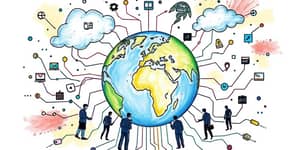
In an era defined by rapid technological breakthroughs, economic shifts, and environmental imperatives, adaptability has become the lifeblood of successful organizations. As the world of work transforms at an unprecedented pace, businesses that invest in flexible, resilient models will not only survive—they will thrive.
Several global forces are converging to redefine how, where, and why we work. From advanced robotics to sustainability drives, these trends demand proactive strategies.
These macro trends are not distant predictions—they are unfolding today. Successful businesses are already aligning investments to harness these forces, turning potential disruptions into competitive advantages.
The traditional nine-to-five office model is giving way to hybrid and flexible approaches. Organizations are embracing new paradigms to boost productivity, attract talent, and reduce costs.
Hybrid work is now more than a pandemic legacy; it’s a strategic choice. Companies benefit from lower real estate expenses and a reduced carbon footprint through remote solutions. Meanwhile, four-day workweeks in tech, education, and healthcare are gaining traction, fostering innovation and mental well-being.
By adopting modular, goal-driven structures, businesses can scale teams up or down with minimal friction. This agility allows rapid pivots when markets shift or new opportunities arise.
At the heart of adaptability lies the people powering tomorrow’s economy. As roles evolve, continuous learning and human-technology collaboration become paramount.
Skills gaps are widening across industries, but forward-looking companies prioritize upskilling and reskilling. Over 60% of employers will invest heavily in workforce development over the next five years[5]. In-demand competencies include AI and big data, cybersecurity, technological literacy, and creative problem-solving.
Resilience and creative thinking are crucial to navigate uncertainty. Integrating AI as an augmenting partner—rather than a mere automation tool—creates opportunities for employees to focus on higher-value tasks. This shift demands robust training programs and a culture that rewards experimentation and learning from failure.
Adaptable business models require strategic investments in both technology and processes. From digital platforms to eco-friendly practices, the right infrastructure underpins long-term success.
Incorporating environmental, social, and governance (ESG) metrics into core strategies also boosts reputation and meets rising stakeholder expectations. These sustainable practices are no longer optional—they are core to long-term competitive advantage.
Leading companies across sectors provide blueprints for adaptability. Tech giants like Microsoft and Salesforce combine flexible work options, AI adoption, and robust well-being programs to maintain talent and productivity.
Education and healthcare, historically slower to adopt flexible models, are now experimenting with hybrid service delivery and telehealth, demonstrating that adaptable frameworks can yield better outcomes for both providers and consumers.
Global talent pools foster diverse perspectives, but managing time zones and cultural differences requires advanced communication platforms and empathetic leadership. Organizations that master these challenges gain access to world-class expertise and 24/7 operations.
Despite its promise, adaptability comes with hurdles. Distributed teams can struggle with coordination, and digital equity issues may leave some employees behind. Cross-border work intensifies legal and security complexities.
To overcome these obstacles, leaders must:
Proactive scenario planning and cross-functional governance bodies can mitigate regulatory risks and align disparate teams. By anticipating challenges early, businesses convert potential roadblocks into strategic differentiators.
The future of work will be defined by organizations that refuse to be bound by outdated paradigms. Investing in adaptable business models—through technology, people, and sustainable practices—creates a resilient foundation for growth.
As you chart your path forward, remember that adaptability is not a one-time project but an ongoing journey. Cultivate a culture of learning, integrate human and artificial intelligence, and build structures that can pivot with purpose. In doing so, your organization will not only weather the storms of change—it will harness them as powerful engines of innovation.
References













